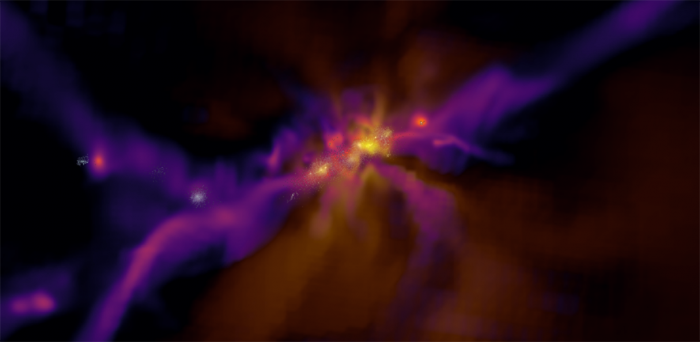The study, published in the Monthly Notices of the Royal Astronomical Society, suggests that the NASA James Webb Space Telescope (JWST), scheduled to launch in November 2021, will be sensitive enough to observe the birth of galaxies directly.
The UK-led research team examined six of the most distant galaxies currently known, whose light has taken most of the universe’s lifetime to reach us. They found that the distance of these galaxies away from Earth corresponded to a ‘look back’ time of more than 13 billion years ago, when the universe was only 550 million years old.
Analysing images from the Hubble and Spitzer Space Telescopes, the researchers calculated the age of these galaxies as ranging from 200 to 300 million years, allowing an estimate of when their stars first formed.
"Theorists speculate that the universe was a dark place for the first few hundred million years, before the first stars and galaxies formed," said lead author Dr Nicolas Laporte from Cambridge's Institute of Astronomy. "Witnessing the moment when the universe was first bathed in starlight is a major quest in astronomy.
"Our observations indicate that cosmic dawn occurred between 250 and 350 million years after the beginning of the universe, and, at the time of their formation, galaxies such as the ones we studied would have been sufficiently luminous to be seen with the James Webb Space Telescope."
The researchers analysed starlight from the galaxies as recorded by the Hubble and Spitzer Space Telescopes, examining a marker in their energy distribution indicative of the presence of atomic hydrogen in their stellar atmospheres. This provides an estimate of the age of the stars they contain.
This hydrogen signature increases in strength as the stellar population ages but diminishes when the galaxy is older than a billion years. The age-dependence arise because the more massive stars that contribute to this signal burn their nuclear fuel more rapidly and therefore die first.
"This age indicator is used to date stars in our own neighbourhood in the Milky Way but it can also be used to date extremely remote galaxies, seen at a very early period of the universe," said co-author Dr Romain Meyer from UCL and the Max Planck Institute for Astronomy. "Using this indicator we can infer that, even at these early times, our galaxies are between 200 and 300 million years old."
Image: The formation and evolution of the first stars and galaxies in a virtual universe similar to our own
Credit: Dr Harley Katz, Beecroft Fellow, Department of Physics, University of Oxford
The formation and evolution of the first stars and galaxies in a virtual universe similar to our own
Credit: Dr Harley Katz, Beecroft Fellow, Department of Physics, University of Oxford
Reproduced courtesy of the University of Cambridge
